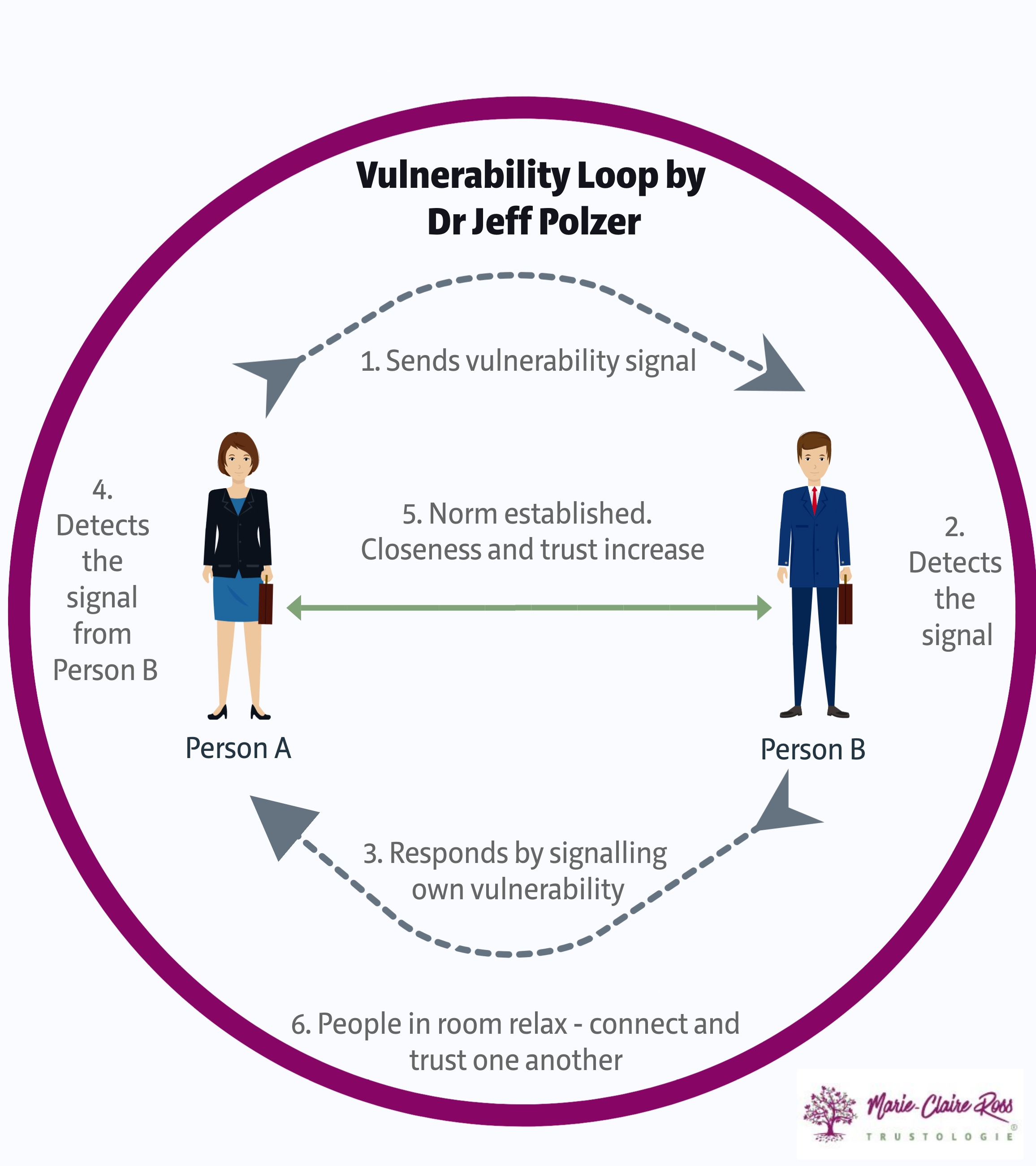
The pandemic has been a game-changer in so many aspects. In the workplace, it has really crystallised what we want in our work experience.
Over the last two articles, we have covered how to foster psychological safety and create meaning for your team to improve performance. In the final of this three-part series, we will now cover improving connection. If you want to learn more about this, check out my book TRUSTED to THRIVE: How leaders create connected and accountable teams that unpacks it all in more detail.
Feeling some sort of connection to your teammates or organisation isn’t something that is commonly acknowledged in business. Yet, great leaders intuitively realise that what propels their organisation or team forward is a feeling of connection.
Theo Epstein, the President of Base Ball Operations at Chicago Cubs World Series Championship, helped guide their win in the first World Series Championship in 108 years. In an interview with Fortune magazine, Epstein credited the win to the team’s connection, he said:
“When people do things they weren’t even sure they were capable of, I think it comes back to connection. Connection with teammates. Connection with organisation. Feeling like they belong in the environment. I think it’s a human need – the need to feel connected. We don’t live in isolation. Most people don’t like working in isolation – some do, but typically don’t end up playing Major League Baseball.”
Epstein is right. We do have a need to be with others, in fact, we are biologically wired to want to be with other people. Having a sense of belonging to those around us improves our well-being.
Neuroscience experiments show that when people intentionally build social ties at work, their performance improves. Those that have high trust levels in the workplace have more meaningful relationships and feel both, secure in and loyal, to their group. They also know they have support when they need it.
Yet, we often receive conflicting workplace messages that we need to focus on tasks and not waste time making friends. When connection is strained in an organisation, you can easily see it by simply walking around and noting the types of interactions.
As one CEO from a mid-size company commented in one of my CEO roundtables:
“There’s great merit in walking down hallways or the factory floor. You get a sense of conversations. When you walk into the lunch room and see everyone with their heads down and looking into their phones. You ask yourself, why aren’t they having a conversation in that sort of environment? Those sorts of signs tell you a great deal.”
Without connection, people don’t have open conversations where they can talk through issues and get through bottlenecks. It slows down progress and makes the work of leaders much more frustrating and burdensome.
But connection is more than just having drinks after work on Fridays, gossiping about your teammates or talking about footy.
Here are eight tips for leaders to improve connection in their team and across the organisation:
1. Regular productive meetings
Meeting face to face is an obvious method to build trust. While this is not always possible for virtual teams or those located across different regions, having daily or weekly phone meetings clears up roadblocks, helps people get clarity and focus on the right priorities.
A 2015 study of 2.5 million manager-led teams in 195 countries found that workforce engagement improved when supervisors had some form of daily communication with direct reports.
Not only do meetings improve the connection between team members, most importantly it links everyone to the leader. Employees want to see that their leader trusts them. As a leader, you can’t be detached or absent.
Often, leaders will tell me they stopped meetings because they waste time.
Yes, meetings can be a total waste of time. When leaders aren’t any good at running them! Quite often, when there are no regular meetings, leaders are in constant fire-fighting mode dealing with lots of little issues throughout the day. The irony is that if they had a consistent communication rhythm these issues would be cleared at once, freeing up time.
Show me a leader who refuses to do regular meetings and I’ll show you a leader whose direct reports don’t trust them.
Leaders who have mastered how to run meetings effectively are more connected and present to the challenges facing the business. This builds an important intuitive feel for the organisation and the people in it. It’s a powerful connection tool.
Communication is all about reducing ambiguity and uncertainty. When employees feel that communication is ambiguous or they don’t understand what is expected of them, they fall into fear and low trust.
As a leader, it’s vital that you reduce uncertainty by letting people know where the company is headed and why. Ensure employees are well informed about the company’s goals, strategies, and tactics. Share as much information as you can to help people perform, avoiding irrelevant or confidential information.
Openly sharing your expertise, both at work and even out of work, also builds trust. Encouraging your coworkers to share their knowledge is also important. For example, if an employee went to a conference, ask them to share what they learnt at a lunch and learn. If you or other team members do volunteer work, also share what has been learnt. This does a lot to build connection and meaning (and make people feel valued in the process).
When leaders thank team members for their contribution it lights up the reward network in the brain. The result is that not only do people more connected to the organisation but they feel more fulfilled and willing to try new things.
Barbara Frederickson, in the book Positivity, found that high-performance teams gave five positive comments to every one negative (5:1), while average teams had a ratio of 3:1.
Introducing a gratitude ritual into weekly meetings or even handing out gratitude cards to colleagues is a good starting point. For example, Covestro, a world-leading supplier of high-tech polymer materials, has introduced gratitude into their global offices to improve connection and meaning:
Image Credit: Covestro
Today, business requires a level of collaboration that’s impossible where leaders are self-interested and compete with others. Knowledge work requires bringing together those with the right skills to solve challenges.
If you’re managing your career, you’re managing a series of relationships. Successful high trust leaders have established solid networks of peers and other professionals that enable them to find the right people in any high stakes project.
In the book Tribal Leadership, Dave Logan says that high trust leaders create triads. They include three people (or more) in all their meetings. This reduces their time repeating instructions, but it also builds trust, as everyone knows what is going on. On the other hand, low trust leaders prefer dyads. Meeting with people one on one so they can control information and who they know.
Be a high-trust connector and ensure the majority of your meetings have at least three people.
At GE, they realise that 50% of their 300,000 employees have been with the company less than five years. This means they don’t quite have the personal networks to succeed and get ahead. While they are developing a talent management tool to connect employees across the world, not all companies have 300,000 employees to manage. Yet, it’s still an issue that needs to be addressed by most organisations (especially once you get over 150 employees).
As a leader do what you can to remove common roadblocks for new starters. Help them access information faster and whom they need to connect to and when.
5. Management By Walking Around
Savvy business leaders are masters at walking around their organisation or department asking individuals specific questions to find out more about what’s working and what’s not. The good news is that if people are expecting you to pop over at any moment and ask questions, they will start to be prepared. This gets employees to review their work – a powerful tool for constant improvement.
Increasing visibility makes people more likely to trust you.
One of the most important capabilities of a successful leader is being comfortable with delegating work. Not only are they more effective because they get more work done, but it makes their direct reports feel good because they are being trusted to deliver.
Leaders who avoid delegating tend to rely on themselves falsely believing only they are capable of doing the work. Over time, they feel alone, even betrayed by the organisation, because they feel overworked and overwhelmed.
Cross-functional teams ensure employees are highly networked. It is probably one of the most important features of a high trust culture. It can be used in three different ways.
The first is when a team or committee is formed to solve a problem.
The second type of cross-collaboration is to encourage people to learn about different departments. Where organisations commonly get stuck, is a lack of understanding of what other teams or departments do which often results in misaligned interests. Companies such as Flipboard and “Mock O’Clock,” have employees volunteering to hold informal, weekly demos of the projects they’re working on, to foster more collaboration.
Of course, teams that get along well together have fun and celebration outside work together. Never underestimate the importance of socialising outside of work hours (or inside).
Celebrate reaching milestones, kicking goals and looking after customers. Enjoy being together without working. If the only communication team members have with each other is task related, it reduces the ability for team members to be resilient during conflict.
Give teams time to socialise and talk about things that are non-task related. Sponsor lunches, dinners, activities and after-work parties.
As Abraham Maslow taught in his Hierarchy of Needs, we can’t concern ourselves with higher goals until we have the necessities of life, including safety, connection and meaning. If we don’t feel that, we’re more likely to be focusing our energies on survival rather than creation. We’re unable to commit and believe in the vision.
Trust gives us a sense of safety to explore and understand our world. Without trust, there is no meaningful connection between people. It’s just meaningless co-ordination.
In a business context, trust empowers us to commit to actions, make decisions faster and have the confidence to buy into a big vision and get an innovative project off the ground.
What are you going to do to increase connection with your team and peers?

The pandemic has been a game-changer in so many aspects. In the workplace, it has really crystallised what we want in our work experience.

A common statement made about trust is that you need vulnerability. Building trust requires team members to be vulnerable with one another. That means confess to...